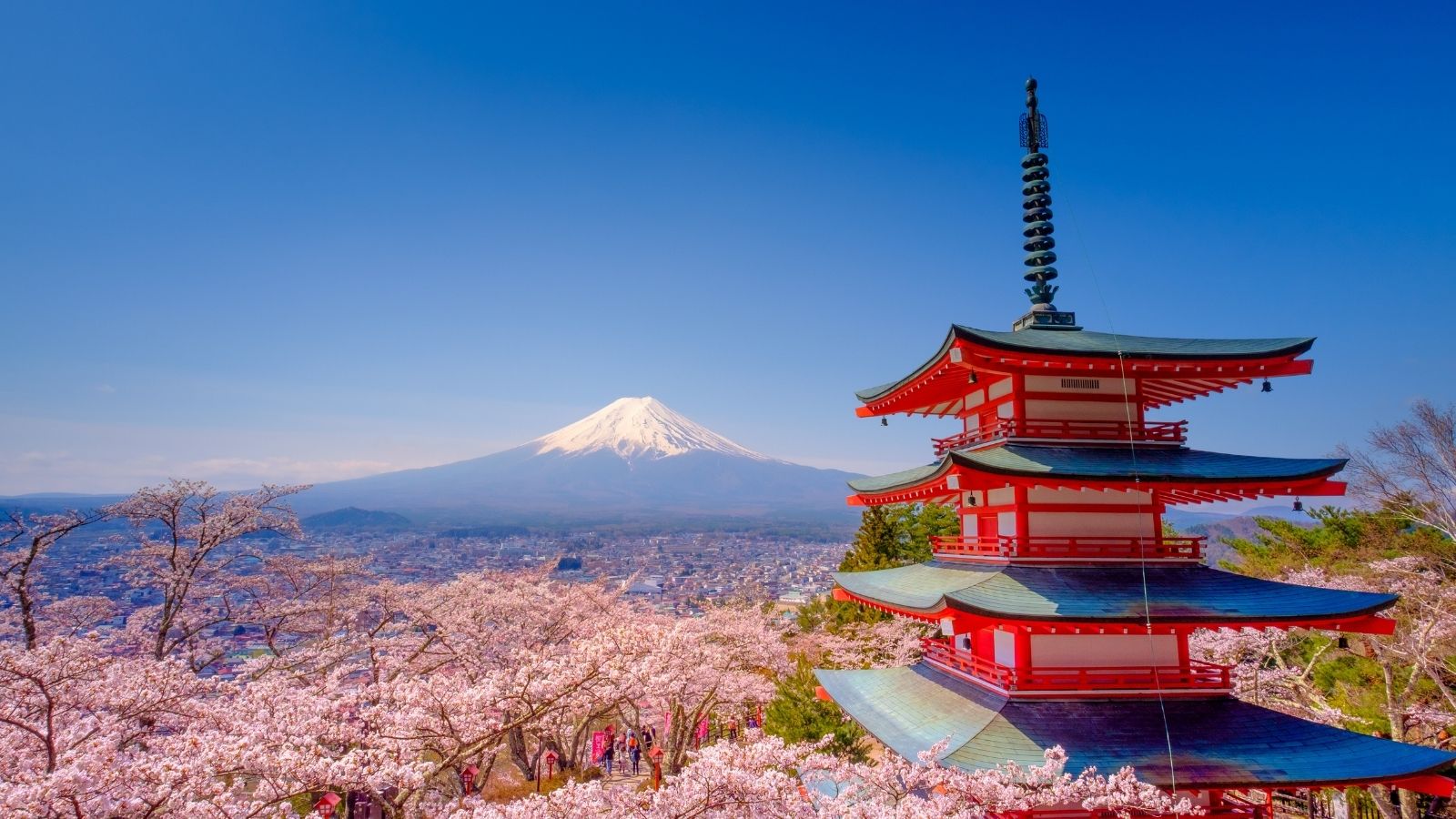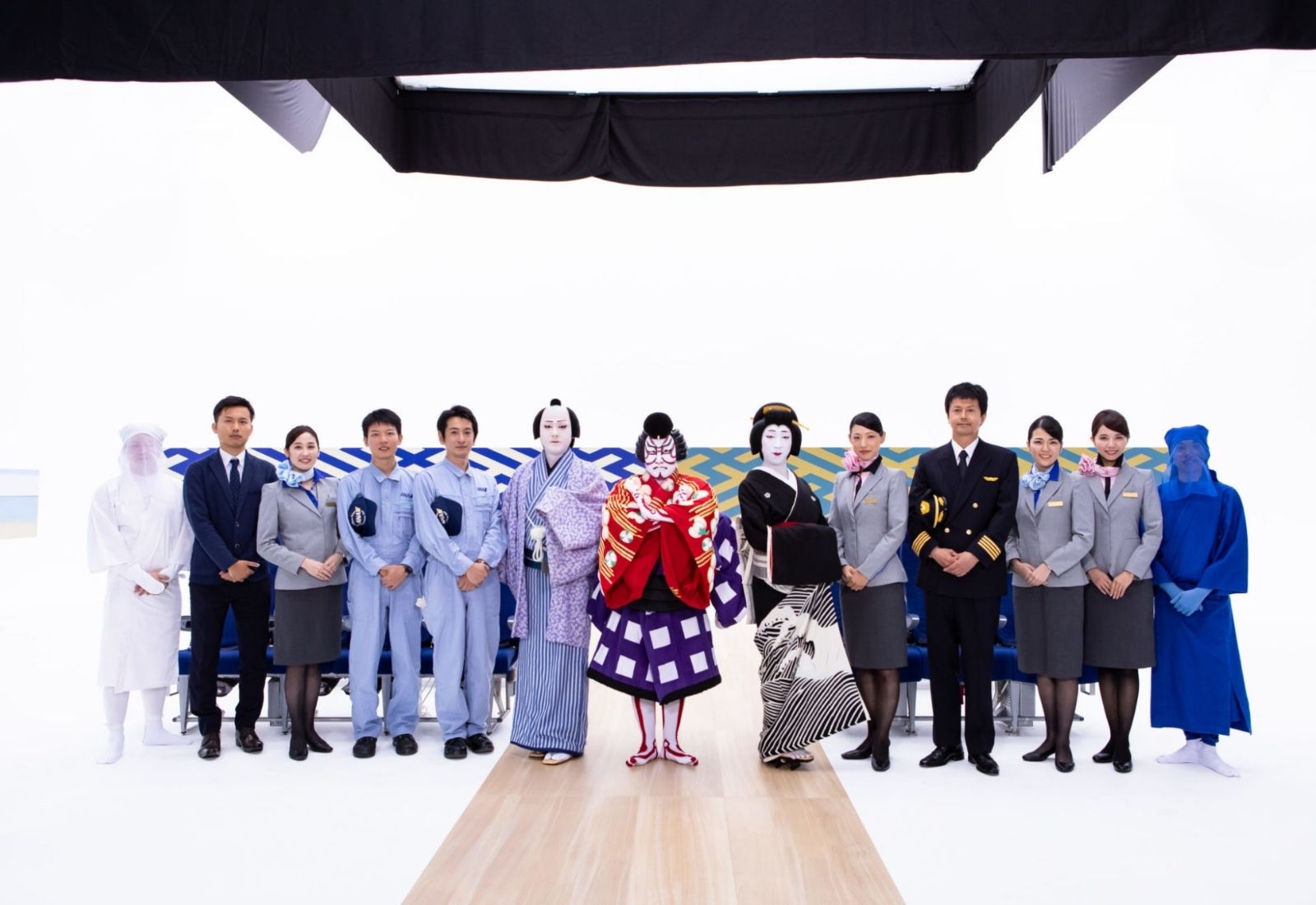
JAPANESE THEATER TODAY
Traditional Japanese theater (日本伝統芸能) is a rich and complex art, which has its roots in ancient shamanic beliefs, music and ancestral dances widespread in north-eastern Asia, mainly linked to two main religions: Shinto and Buddhism .

A group of young Kabuki students in Damine © The Independent
As time passed, these dances lost their religious meaning and gradually transformed into mimed or spoken representations , abandoning their rituality, as they were now part of Japanese folklore , and coming to attract great attention in Western and European artists .
From its origins to the present day, Japanese theater has developed in many particular and interesting forms, but the most famous and well-known even today are certainly three: kabuki , a dramatic show for the middle class (there has been much talk about it in 2019 in an original video campaign by ANA All Nippon Airways ), nō , in which characteristic masks are used, bunraku , or puppet theatre .

A print from 18th century traditional Kabuki theater © Rex via The Independent
Kabuki - a term that literally means "being out of the ordinary" - is the most widespread theatrical art in the country of the Rising Sun and has origins that date back to the 17th century, when a group of marginalized women under the leadership of the Shionist priestess Izumo no Okuni decided to dance on the banks of the Kamo River, in Kyōto. The word Kabuki, formed from the ideograms歌ka (singing),舞bu (dance) and伎ki (skill) derives from the verb kabuku , which indicated the appearance and clothing in vogue during the 16th century and characteristic of the so-called kabukimono , the masterless samurai, servants of the shogun, leaders of war expeditions.
Actors usually spread a white rice powder with a very pasty and dense consistency on their face and neck while they apply a similar red paste on their lips and eyes; theater in Japan has never been just entertainment, but was the place where fashions were created and launched: wigs and costumes are more eye-catching the higher the social status of the person wearing them.

A performer's makeup © @ibreadingroomasianedition
There are three types of works in this theatrical form: Jidai-mono , historical-themed narratives of legendary and fantastic deeds, Sewa-mono , with facts of ordinary people set in the contemporary world, Shosagoto , dance works.
The most important characteristics of Kabuki theater are its long duration (the shows sometimes started in the morning and ended in the late afternoon), the participation of the audience (to approve the actors' attitudes or express their amazement towards the dynamics of the stories told ) and the structure of the stage (wooden and off-center to the right, in favor of a walkway towards the dressing rooms).

A print representing a traditional theater of the late nineteenth century © XGAE2 @periodpaper
In Nō or Nogaku theater (能, literally "skill") , music becomes the fundamental element of the performance and is performed only with wind instruments and percussion. The texts are constructed so that they can be interpreted freely by the viewer and are characterized mainly by slowness , their Spartan grace and the use of characteristic masks .

A N ō style theater performance © Alex Sinclair
According to its founder Zeami Motokiyo, all Noh representations create an aesthetic ideal called yugen , a profound and subtle spirit and of hana, novelty (a principle which will subsequently also influence Kabuki): Noh therefore represents the search for beauty in forms typical of Japanese culture .
The performance takes place on a stage made of hinoki (Japanese cypress), completely empty and without any decoration or scenography, apart from the kagami-ita , a painting of a pine tree; in contrast to the bare stage, the costumes are extremely rich and made of silk brocade . Nowadays there are around 1500 professional nō actors in Japan and the art form continues to exist thanks to the five existing schools: Kanze, Hosho, Komparu, Kita and Kongo.

The poster for a Bunraku show scheduled for 2020 at the National Theater in Tokyo © @ntj.jac.go.jp
Bunraku theater (文楽) or Ningyō jōruri (人形浄瑠璃 literally "pure crystal" or "lapis lazuli") was born around the 16th century, when some minstrels joined traveling puppeteers to tell their stories. The fundamental instrument for this art is the shamisen , a three-stringed lute that creates the musical texture of the show.
The name Bunraku was adopted in 1805, and derives from the name of the famous impresario Uemura Bunrakuken, who built the first permanent theater and founded a permanent company. In 1734, the current system of moving the puppets by a group of three men was introduced: the omo-zukai, the main operator who wears an elegant ceremonial kimono (the kamishimo) and operates with his face uncovered, and his two assistants ( the hidari-zukai and the ashi-zukai), who are dressed in black and have their faces covered by a hood.

A Bunraku show staged in the USA © Japan Society Boston
A curiosity about traditional Japanese Bunraku theater? The puppeteers must complete an apprenticeship lasting almost thirty years , specializing for ten years in each of these three positions: the extraordinary result of this long training is that the puppet seems to come to life before the incredulous eyes of the spectators.
TENOHA E-SHOP
the first Japanese concept store in Europe: online
Mitomo Aloe and Cherry Blossoms Essence Sheet Mask - €3.50
Mitomo Camellia Flower Oil + Matcha Essence Sheet Mask - €3.50
Mitomo Coenzyme Q10 and Lithospermum Essence Sheet Mask - €3.50
Mitomo Hyaluronan and Lithospermum Essence Sheet Mask - €3.50










